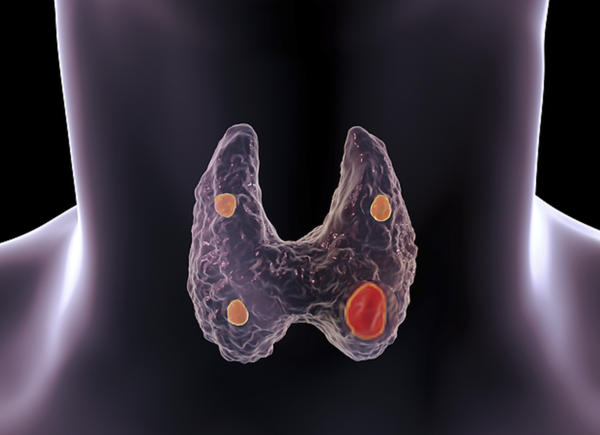Parathyroid Q&A Guide
The Basics
Parathyroid disease is a disease of calcium.

Most people know that calcium is important for bone health. But calcium is also essential for your brain, nerves, muscles, heart, and blood. Your body depends on having the right amount of calcium in the blood, and doesn’t like calcium levels that are either too high or too low.
Calcium is so important that it has its own dedicated organ – the parathyroid. You have four parathyroid glands in your neck, mostly located around the thyroid. All four exist solely to regulate calcium levels, and they do this by making parathyroid hormone, or PTH. When your serum calcium level drops too low, your parathyroid glands make more PTH. This raises the calcium level in several ways. If the calcium rises too high, the parathyroid glands stop making PTH, which allows the calcium to drop back to normal.
The most common disease of the parathyroids is called primary hyperparathyroidism. This occurs when one or more parathyroid glands make more PTH than the body needs, which leads to high calcium levels. Usually this overactivity is due to a benign tumor in the parathyroid called a parathyroid adenoma. Although these tumors are generally very small, cannot be felt, and often cannot be seen on most imaging scans, they can do significant damage to your physical and mental health. Fortunately, most of them can be found and removed during a safe outpatient procedure. Unfortunately, the condition needs to be diagnosed before it can be treated, and health care providers are not always aware of how to diagnose this, leading to delays in treatment.
High Calcium Levels
A high calcium level in the blood is usually caused by primary hyperparathyroidism, often due to a benign parathyroid tumor. While these tumors are almost never cancerous, they still need to be removed.
Another condition, called secondary hyperparathyroidism, occurs when your calcium levels are too low. The parathyroid glands respond to low calcium by making more parathyroid hormone (PTH), which can also lead to high PTH levels. The difference between primary and secondary hyperparathyroidism is that the calcium level is LOW in secondary but usually HIGH in primary.
Primary Hyperparathyroidism
Primary hyperparathyroidism is characterized (in most cases) by high blood calcium levels and high or normal PTH levels. Most people with primary hyperparathyroidism have symptoms or will develop them over time.
Symptoms of Primary Hyperparathyroidism
The most common symptoms of parathyroid disease are fatigue and a general sense of not being well. This can range from mild tiredness to severe fatigue that makes it difficult to work or perform normal daily activities. Cognitive symptoms like inability to concentrate and memory loss are also common. Because the most common symptoms are non-specific (they could be caused by many illnesses), people with primary hyperparathyroidism are often misdiagnosed. Women are often told that the symptoms are due to menopause, or premenopause. Men are told that these are just the signs of getting older. Many patients feel bad but have difficulty describing it. If untreated, primary hyperparathyroidism can also lead to osteoporosis, heart disease, kidney stones, kidney failure, and more.
Parathyroid Surgery
For primary hyperparathyroidism, the only cure is with an operation (parathyroidectomy). During the operation, one or more diseased parathyroid glands are removed.
There are no medications that can cure primary hyperparathyroidism. There are medications that can help bring your calcium levels down if they are extremely high, but this is a temporary measure and should be followed up with surgery when possible.
Secondary Hyperparathyroidism
It is important to distinguish secondary hyperparathyroidism from primary, because the treatment is different. Most of the time, it is easy to tell them apart: calcium levels in secondary are always LOW.
In secondary hyperparathyroidism, the parathyroids are overactive, but the problem did not start with the parathyroids. The underlying problem is usually chronically low calcium levels, which cause the parathyroids to release more PTH in an attempt to get the calcium up. If your body cannot get the calcium back up to normal, the parathyroid glands will just work harder - making more and more PTH! Over time, the PTH can get quite high, which leads to bone loss.
To treat secondary hyperparathyroidism, you need to know the underlying cause. The cause may be a severe Vitamin D deficiency, a history of gastric bypass or other intestinal surgery, chronic diarrhea, or renal failure. First-line treatment is aggressive supplementation with calcium and Vitamin D to get the calcium back into a normal range. If the calcium is normal, the parathyroid glands will be able to relax and stop making so much PTH. Surgical intervention is necessary in only some cases of secondary hyperparathyroidism, particularly if the glands have grown so much that they can no longer “turn off,” even when the calcium is back in normal range.